hand weaving selvedge denim from waste
In April 2022, The Aviary Studio founder Sarah Ward was granted funding by the Theo Moorman Trust for Weavers to delve deeper into her research and practice of traditional denim weaving.
The main objective of this on-going project is to create a strong, durable pair of jeans from scratch, without using any virgin cotton or toxic chemicals.
Using waste yarn discarded by the UK textile industry, and only natural ingredients in the dye vat, Sarah endeavours to honour traditional denim weaving & dyeing methods used before the advent of synthetic dyes and industrial production processes.
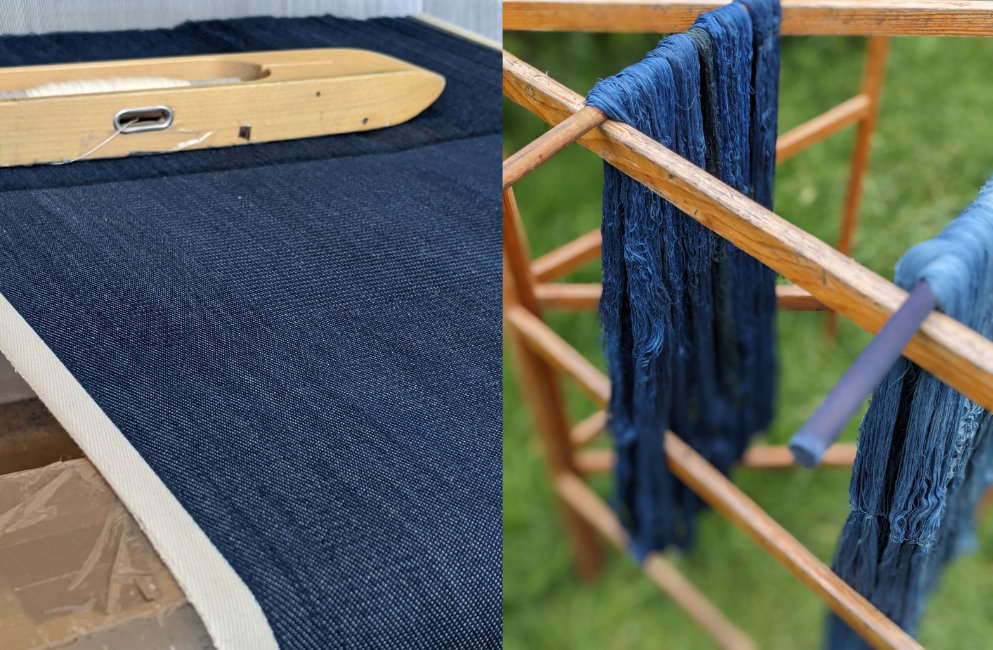
As an environmental activist, the main focus of her work is to share knowledge through craft. She uses her woven work to advocate weaving as an art form, encouraging the learning and passing on of skills in traditional crafts, but also to raise awareness about waste, and the impact of fast fashion on our planet.
Since April 2020, Sarah has been developing her practice and with the support of the trust has now achieved a cloth that can she can confidently call denim! From this cloth, a jean prototype has been produced, equipped with rivets, selvedge turn ups and a classic stitched arcuate on the back pocket.
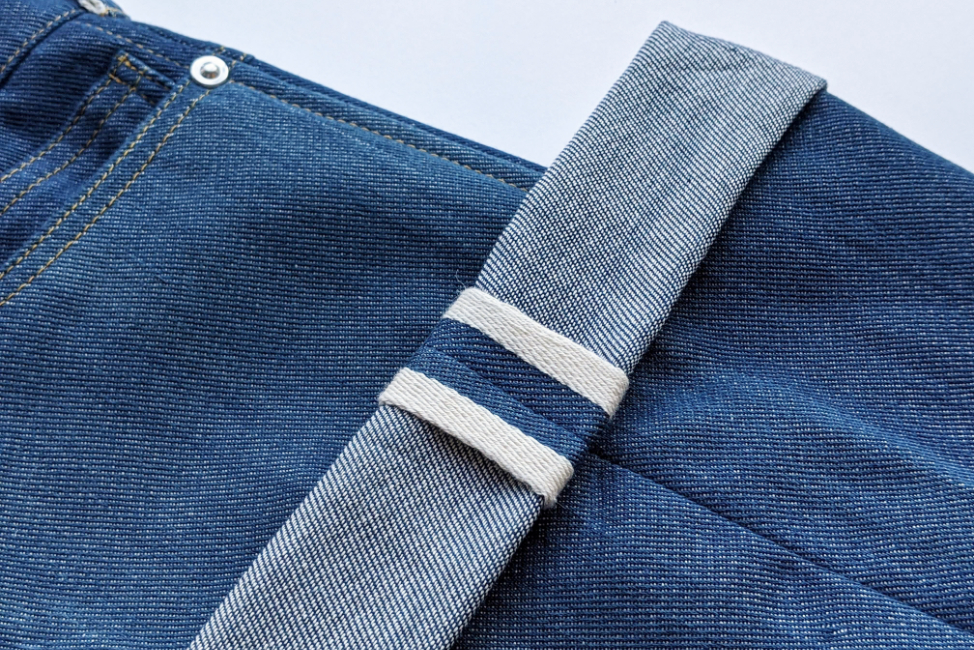
The prototype, cut and sewn by Sally Holditch was exhibited at Flux:
The Experimental Weave Lab in September 2022, sparking much dialogue about denim production, then and now, and also about the environmental & social impacts of todays industry, about how our clothes are made, and the journey they go on before they arrive in our wardrobes.
This project is not a business venture, but rather an educational project, sharing knowledge and encouraging skill sharing, spreading appreciation for hand craft, with a nod to our ancestors.
The process and outcomes of this project are shared publicly, and you can follow the journey by visiting The Aviary Studio Instagram.

Today, most denim is made with virgin cotton grown with pesticides, and is dyed using synthetic indigo, using chemicals such as Lye and Sodium Hydrosulphite as the reduction agents - not to mention excessive water usage during the dyeing and finishing processes. The social and environmental impacts of the denim industry today - along with the rest of the fast fashion industry - are significant. Though work is being done to develop greener practices, there is currently still very little transparency in the supply chain, and little awareness around the issues.
Honouring traditional and natural methods, Sarah has chosen to eliminate synthetic or toxic chemicals from her dye vat, opting instead for plant based pigment from the Indigofera Tinctoria plant (native to India) and Persicaria Tinctora (native to Japan), and using only natural ingredients in the dye vat including organic henna & lime, an iron vat, and a fructose vat.
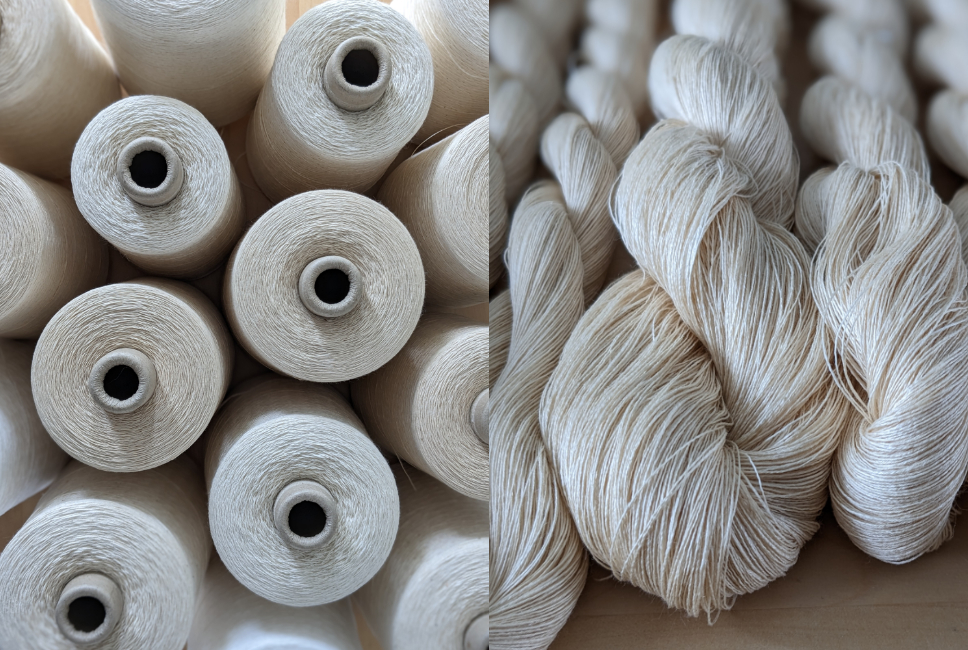
All of the yarns used to make the denim are 'waste' that have been discarded by the UK textile industry and diverted from landfill. Using waste cotton eliminates the extra water and pesticides that are usually required in the production of virgin cotton. The cotton arrives here as 'end-cones', the last small amount of yarn left on the cones, that the factory cannot use in their machinery.
When one waste yarn has run out, it's time to move on to another, which means that each length of hand woven denim is slightly different. Thats the beauty of using waste yarn, when it's gone, it's gone, each cloth unique, each yarn a slightly different twist.
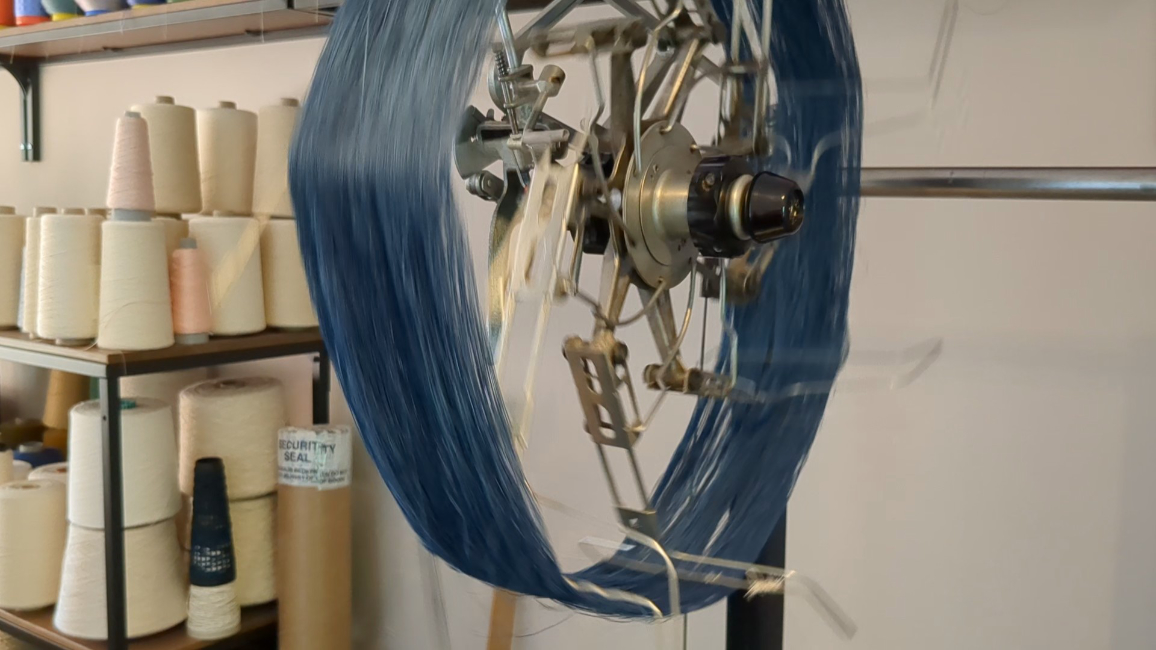
Once the waste yarn has been wound into 'skeins' and dyed, the skeins are then transferred back onto cones ready for warping.

This hank-to-cone winding machine was funded by the Theo Moorman Trust For Weavers, a fantastic organisation supporting UK weavers to enjoy artistic freedom so that they may contribute to the development of hand weaving and the education of future weavers.
This single headed machine was crafted using parts from old, industrial multi-headed machines from mills that have either shut down or moved onto faster technology.
Hand made by Paul Holliday from Tortex Engineering, it features both the 'swift' (for initially winding skeins of un-dyed yarn) and cone winder (for winding the dyed skeins back onto cones).
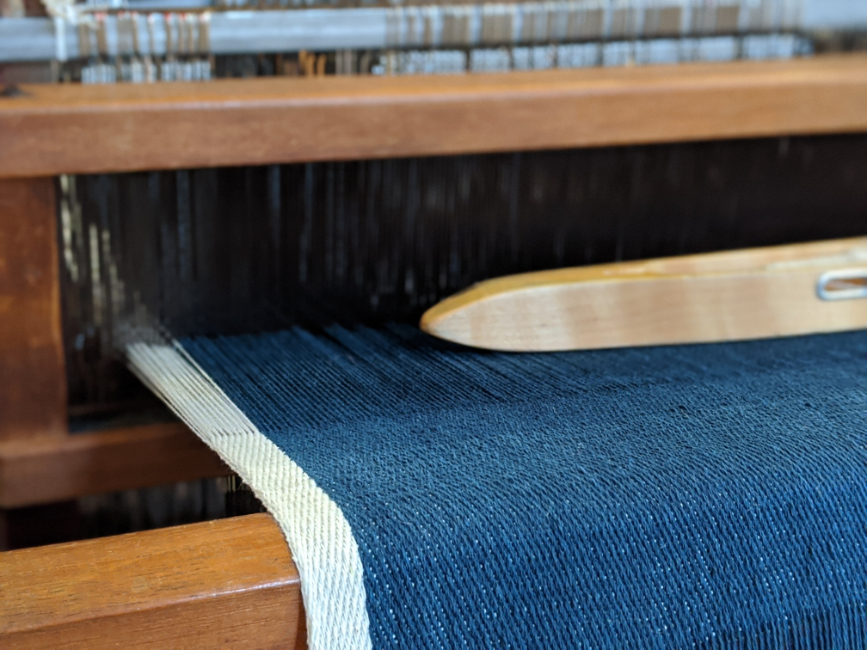
Dyeing skeins rather than full length warps is a much easier and more efficient process for two reasons; skeins introduce less oxygen into the dye vat as they are smaller and easier to handle, plus, using multiple cones of dyed yarn to wind a warp ensures a more evenly spread distribution of dye across the width of the warp, with less obvious striping.
Once the warp has been made, it is wound firstly onto the back beam of the loom, and then each individual warp yarn is threaded through individual 'heddles', which sit in each 'shaft' (shafts are the harnesses that lift and drop during the weaving process). After that, the yarns are threaded through the 'reed' or 'beater', and weaving can begin!

Traditionally, denim was woven on 'shuttle looms' with white 'selvedges' down each side. These would be visible on the inside hem or 'turn ups'. The word selvedge comes from the term 'self-edge', referring to the way in which the edges are secured by the weft passing back and forth.
These days, most denim is woven on industrial projectile looms, which cannot achieve the self-edge, and edges must be overlocked to prevent fraying. Some premium denim brands still use the original 'shuttle looms', some in the US and some in Japan.

Above, Aviary Studio's hand woven selvedge denim straight from the loom. Without any finishing processes applied to the cloth, it is referred to as 'loom state', 'raw' denim, or 'dry' denim.
Below, the jeans that were cut and sewn by Sally Holditch, from the Aviary Denim!

To find out more and to follow this denim journey, please get in touch via our contact page or visit the Instagram.